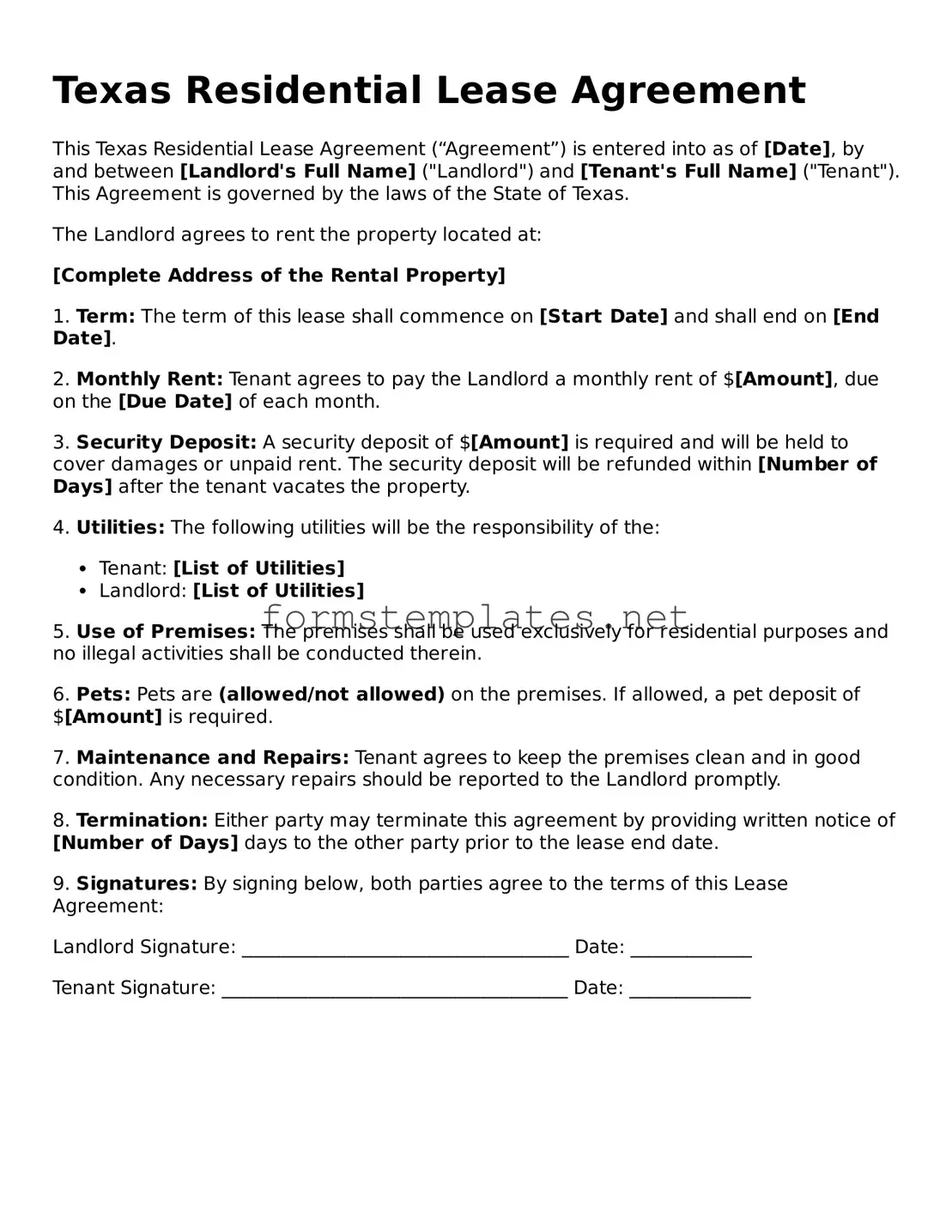Texas Residential Lease Agreement
This Texas Residential Lease Agreement (“Agreement”) is entered into as of [Date], by and between [Landlord's Full Name] ("Landlord") and [Tenant's Full Name] ("Tenant"). This Agreement is governed by the laws of the State of Texas.
The Landlord agrees to rent the property located at:
[Complete Address of the Rental Property]
1. Term: The term of this lease shall commence on [Start Date] and shall end on [End Date].
2. Monthly Rent: Tenant agrees to pay the Landlord a monthly rent of $[Amount], due on the [Due Date] of each month.
3. Security Deposit: A security deposit of $[Amount] is required and will be held to cover damages or unpaid rent. The security deposit will be refunded within [Number of Days] after the tenant vacates the property.
4. Utilities: The following utilities will be the responsibility of the:
- Tenant: [List of Utilities]
- Landlord: [List of Utilities]
5. Use of Premises: The premises shall be used exclusively for residential purposes and no illegal activities shall be conducted therein.
6. Pets: Pets are (allowed/not allowed) on the premises. If allowed, a pet deposit of $[Amount] is required.
7. Maintenance and Repairs: Tenant agrees to keep the premises clean and in good condition. Any necessary repairs should be reported to the Landlord promptly.
8. Termination: Either party may terminate this agreement by providing written notice of [Number of Days] days to the other party prior to the lease end date.
9. Signatures: By signing below, both parties agree to the terms of this Lease Agreement:
Landlord Signature: ___________________________________ Date: _____________
Tenant Signature: _____________________________________ Date: _____________
